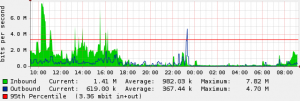I was one of THOSE people who held my breath for the new apple tablet dubbed the iPad. I won’t say I was obsessed with it, but I did follow the it awfully closely, devouring any kind of rumor about specs or leaks of its capabilities. On the day of the launch, I had three tabs of my firefox open to different livebloggers who were at the event and I would cycle through them to see the product pictures or specs.
In the interest of full disclosure, The Strickland Group is a Microsoft Gold Certified Partner. I have worked with and advocated for Microsoft technologies for more than half my life. I was an early adopter of Windows 95, Windows 2000, Windows XP and Windows 7. I used a Windows Mobile phone for years, though I have an iPhone currently. I really wanted to love the iPad.
I think the iPad will be a great device for the average well-to-do consumer. I’d even go so far as to say that when the common home user is looking to replace their XP laptop in a year or two, the iPad might be a good enough choice for them. And at an entry point price of $499, it’s not too shabby. If you were to buy it as a top of the line e-book reader and that’s all you wanted to use it for, it would be a great device.
However, despite all my efforts, I just don’t love the iPad. Sure, it’s not all bad – at least it’s got it’s looks. Also, the websites they demoed rendered beautifully. I believe it would be a pleasure to read the New York Times on the device. But it’s what the thing won’t do that’s stands out for me.
- No support for flash. Are you kidding me Apple? You’re going to release an device that “puts the internet in your hands” that doesn’t play flash. Dumbfounded.
- No camera. Would have been an amazing video conferencing device.
- No multi-tasking. I can’t listen to pandora while I’m surf? I can’t pause a game I’m playing and go google something I just saw on TV? I can’t keep IM going in the background?
Oh well. Holding my breath for iPad 2.0…


